 |
 |
 |
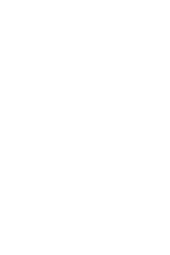
|
Designer : Alice Knackfuss
Season : AW 2015–2016
© Photo : Laetitia Bica
|
|
 |
UN BEL ÉTÉ QUAND MÊME
5/6/2015-13/9/2015
From our Belgian fashion designers to the installations by Pascale Marthine Tayou and Mekhitar Garabedian, BOZAR is preparing itself for a great summer programme
full of fashion and contemporary art!
On 5 June the Summer of Fashion begins with, as its central exhibition, The Belgians. An Unexpected Fashion Story, about the rise and success of Belgian
fashion designers. The exhibition takes an in-depth look at the DNA of Belgian fashion and sheds light on the work of around 100 designers, from the first
pioneers to the new generation. The exhibition is a coproduction with MAD Brussels. In addition to The Belgians, BOZAR is bringing together a number of fashion-related exhibitions: the best of Italian fashion from the 1950s and 60s with Bellissima. The Story of 5 Dresses, naked photos of Vivienne Westwood by
Juergen Teller, a video installation by the author Jean- Philippe Toussaint and the first solo exhibition by the architectural firm V+, designers of MAD Brussels’ new offices spaces and workplaces. More information about the complete fashion programme will soon be available on www.summeroffashion.be.
|

|
Posted 12 June 2015
|
Share this:
|
|
This summer contemporary art is given a key role in the programme, with 24 June as the start date for this exhibition. The Belgian-Cameroon artist Pascale Marthine Tayou wins over the Centre for Fine Arts with his major solo exhibition full of colourful installations. He playfully reflects on themes such as the environment, social injustice, the multicultural identity and our consumer society. Alongside this BOZAR is putting on three more exhibitions which bring the (art) world to Belgium. The biennial Young Belgian Art Prize brings together work by 10 promising young Belgian artists. Chinese Utopias Revisited – The Elephants provides us with a cross-section of leading art in China, with works by 9 contemporary artists. Finally, the Syrian-born Armenian artist Mekhitar Garabedian is putting on a solo exhibition. His work is currently on display in the Armenian Pavilion at the Venice Biennale; the pavilion serves as an exhibition space for artists from the Armenian diaspora and this year won the Golden Lion for the best national pavilion.
Paul Dujardin, CEO of BOZAR Centre for Fine Arts: “Today art functions within a globalised context. We are witnessing the rise of a new type of artist with an intercultural and nomadic way of looking at things; Pascale Marthine Tayou and Mekhitar Garabedian are good examples of this. They take their stratified identity as a starting point for art which doesn’t shy away from confronting the big issues of the day. In the fashion industry we are seeing more and more initiatives which stem from an increased awareness of ecology, overconsumption and decent working conditions. With his label honest by Belgian designer Bruno Pieters is offering us complete transparency about the production process. Art and fashion might not be able to save the world on their own but by interacting with the political and economic domain they can certainly make a difference.”
In order to capitalize on the various exhibitions which are on during the summer BOZAR is organising a series of meetings and screenings in combination with an open summer bar! More information about the summer activities will soon be available on www.bozar.be, on the facebook page /BOZARbrussels or on
www.summeroffashion.be.
|
|
|
|

|

|

|
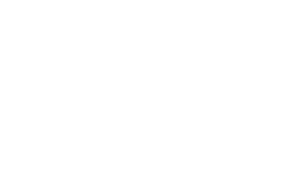
Designer: Dirk Van Saene
Season: 1989
© Photo: Ronald Stoops
Antwerp Six 1986 © Photo: Karel Fonteyne 1986
|
|
THE BELGIANS
AN UNEXPECTED FASHION STORY
5/6/2025-13/9/2015
BOZAR and MAD Brussels are presenting the major fashion exhibition The Belgians, about the rise and success of Belgian fashion designers. The exhibition takes a closer look at the DNA of Belgian fashion and sheds light on the work of around 100 designers, from the first pioneers to the new generation of today.
And that’s not all: at the same time the multidisciplinary festival Summer of Fashion will be taking place in various locations in Brussels.
Since the 1980s it’s impossible to imagine the international fashion scene without Belgian designers. As unexpected as it might seem, the ‘Antwerp Six’ were flavour of the month at the beginning of the 1980s and so it is quite natural to find the Belgian designers in today’s international fashion circuit. The professionalism, craftsmanship, quality and technicality which our compatriots demonstrate, means they have enjoyed international recognition for several decades now. This exhibition focuses on the remarkable DNA of Belgian fashion and what makes it so unique.
The story is told in thematic chapters: the origins, the first fashion houses and the first cautious steps of young designers, the success of the Antwerp Six in the 1980s, the avant-garde generation, the international successes, the fashion schools, the fashion industry, the personal signature of Belgian designers…
|
|
|
|
|

|

|

|
In total there are more than 70 designers including A.F. Vandevorst, Alice Knackfuss, Ali Abdulrashim, Angelo Figus, Anita Evenepoel, Ann Demeulemeester, Ann Salens, Annemie Verbeke, Bernhard Willhelm, Billie Mertens, Bruno Pieters, Carine Gilson, Carine Lauwers, Cathy Pill, Capara, Cédric Charlier, Cedric Jacquemyn, Christian Wijnants, Christophe Coppens, Crstof Beaufays, Danaqué, Damien Ravn, Devon
Halfnight Leflufy, Dirk Bikkembergs, Dirk Van Saene, Dries Van Noten, Edouard Vermeulen, Elisabeth Claes, Elise Kopec, Elise Viste, Elze Lambrecht, Emmanuel Laurent, Eric Beauduin, Erik Verdonck, Filles à Papa, Françoise Dury, Franc’Pairon, Gérald Watelet, Gioia Seghers, Haider Ackermann, Haus Coudeyre, Jan-Jan Van Essche, Jean Paul Knott, Jean-Paul Lespagnard, Josephus Thimister, Jurgi Persoons, Katrien Van Hecke, Klaas Rommelaere, Kris Van Assche, Laetitia Crahay, Léa Peckre, Lena Lumelsky, Maison Norine, Manon Kündig, Marie-Sophie Beinke, Martin Margiela, Marina Yee, Minju Kim, Nele Berkmans, Nico Vegas, Nina Meert, Olivier Theyskens, Peter Pilotto, Pierre Antoine Vettorello, Raf Simons, Shone Puipia, KRJST, Tim Coppens, Tim Van Steenbergen, Demna Gvasalia, Walter Van Beirendonck, Wim Bruynooghe and Yvette Lauwaert.
|
|
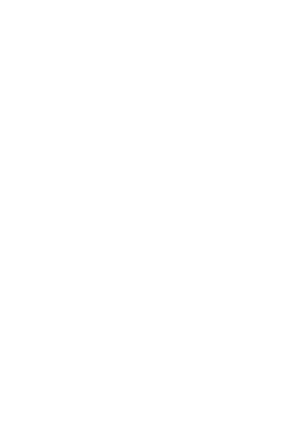
Designer: Ann Demeulemeester
Season: SS 1982
© Photo: Patrick Robyn 1982
Designer: AF Vandevorst
Season: AW 2015-16
Photo: © Ronald Stoops
|
|
|
|
|
|
Summer of Fashion
The Belgians exhibition is the ideal means of placing the spotlight on other art disciplines which are inherently linked to fashion. BOZAR has various events in the pipeline: a reading by Diane von Furstenberg (04.06.2015), photos of Vivienne Westwood by Juergen Teller, the avant-premiere of Dior & I (23.06.2015), the installation Bellissima with Italian fashion from 1945 to 1968 and an exhibition about the architecture firm V+ which designed the new offices for MAD Brussels, to name but a few.
This summer BOZAR is also joining forces with MAD Brussels to organise the Summer of Fashion festival in a variety of locations in Brussels, and this in collaboration with different partners. Visitors can go on a fashion walk that has been specially mapped out from Rue Dansaert to the Brussels fashion school La
Cambre. In the course of the walk they will discover numerous surprising installations by Belgian fashion designers.
The festive opening of the Summer of Fashion is also the start of ‘MADIFESTO – European Fashion Summit’ (04 - 07.06.´15). MAD Brussels is behind this annual opportunity for international fashion professionals to get together.
|
back to top
INTRODUCTION—(THIS IS NOT) A CATALOGUE RAISONNÉ OF BELGIAN FASHION
|
|

|

|

|
It’s about time! Over the last few years, exhibitions about fashion, particularly contemporary fashion, have begun to multiply, reaching a climax in 2015 with a number of big names: Yves Saint Laurent, Jean Paul Gaultier, and Jeanne Lanvin in Paris; Alexander McQueen in London; Karl Lagerfeld in Bonn; Dries Van Noten in Paris and Antwerp. To these can be added those exhibitions taking a rather different approach to clothes by featuring those of David Bowie (Paris) and Björk (New York), where the pioneering Costume Institute is presently hosting an exhibition on the impact of China on the fashionable imagination. Fashion is in fashion and it is easy to see why. With films, retrospectives, and the importance of “fashion weeks” in the lives of cities and public culture, the public at large has granted it cultural status. People are eager to get closer to this creative phenomenon hitherto known only through the media. This is a matter for celebration, since visitors rarely look at the objects exhibited as merchandise or products. This is where fashion becomes interesting— where it must be “divulged,” “revealed,” and “unveiled.”
|
|
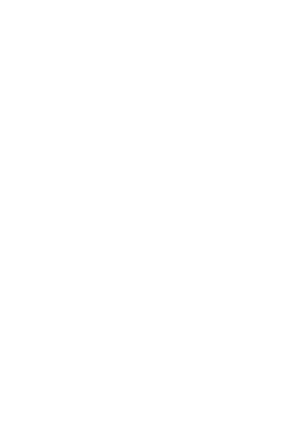
Designer: Dries Van Noten
Season: SS 2005
© Photo: Etienne Tordoir 2004
|
|
|
|

|

|

|
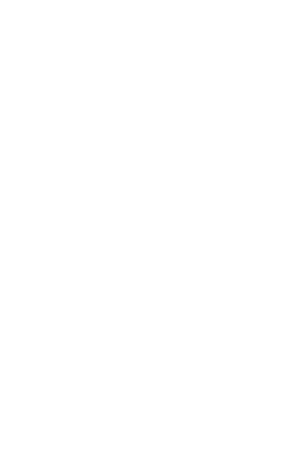
Designer: Raf Simons
Season: SS 1998
© Photo: Ronald Stoops
|
|
The exhibition The Belgians. An Unexpected Fashion Story opens at a pivotal moment in the history of Belgian fashion. Now come of age, its genealogy reveals symbolic changes that have shifted demarcation lines. In 2012, Raf Simons took over from John Galliano at Christian Dior—the most important French house for haute couture. At the end of 2014, Galliano was appointed to the post left vacant in December 2009 by Martin Margiela. Since then, Galliano has been the creative director of the most symbolic fashion house for Belgian designers. The Margiela name, with its “logo” of four white stiches in the middle of the back, designed in 1988, has belonged to an Italian industrial group since 2003. The coincidences are extraordinary: Raf professes limitless admiration (and this is no secret) for Martin, who is replaced by John, who is in turn replaced by Raf. 2015: a new era. The atypical Maison Martin Margiela loses the “Martin” and becomes Maison Margiela, in the same way that Hedi Slimane, when he arrived at Yves Saint Laurent in 2012, dropped the “Yves,” renaming the house “Saint Laurent.” By turning his back on the name Martin (as insiders know his collections), John Galliano severed connections with the original designer, dispensing once and for all with the anonymity that, over the years—and against all expectations—had become a formidable means of communication. Belgian fashion turned over a new leaf.
|
|
|
|
|
|
This is not a catalogue raisonné of the history of Belgian fashion; hence, certain notable actors have been omitted. The subject is too vast, even if we date its real coming of age to the nineteen-seventies, a period coinciding with the expansion of ready-to-wear clothing production and the decompartmentalization of markets. These major upheavals in the system led to the advent of foreign labels and the emergence of the figure of the “fashion designer.” Benefitting from the fashion department established at the Koninklijke Academie voor Schone Kunsten in Antwerp in 1963 and ably directed by Mary Prijot—as well as many talented designers in all parts of the country—Belgium seized the opportunity and jumped aboard. This exhibition aims to tell the story of the extraordinary journey traveled by those Belgians who dreamed of making fashion the savior of the country’s moribund textile industry. With no previous example or fashion culture, Belgium witnessed the democratization and emergence of new styles, influenced by punk and by the unique personalities involved in the beginning of this adventure. The nineteen-eighties—and the major players at that time—mark an awakening from the enchanted mood that had pervaded the country since the Brussels Universal Exhibition of 1958.
|
|
|
|
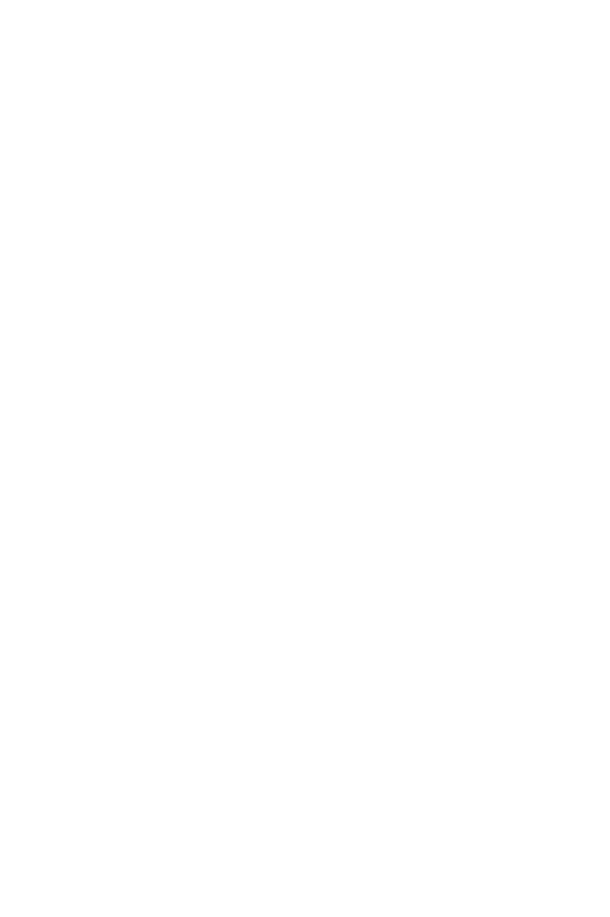
Designer: Dior door Raf Simons
Season: AW 2014-15
© Photo: Etienne Tordoir
|
|
|
|
|
|
Norine Couture, the highly original fashion house established on Avenue Louise in Brussels in 1915 by Honorine Deschryver and Paul-Gustave Van Hecke—an eccentric couple who collaborated with René Magritte from the 1920s—made an important contribution to the introduction of avant-garde Belgian fashion. The banner would be raised aloft once more—and to notable effect—half a century later with the
emergence of a remarkable group of students, graduates of the by-now celebrated fashion department at the Koninklijke Academie voor Schone Kunsten in Antwerp. The nineteen-eighties was a fertile decade, thanks not only to the contribution of creative designers—Japanese, French, and English— and the atmosphere of artistic ferment but also to the work already carried out by pioneering Belgians— including
Ann Salens and Maggy Baum, to mention but two. Another factor lay in the ambitious political policies that created the Belgian Institute of Textiles and Clothing (ITCB). Its visionary ambassador, Helena Ravijst—once again a woman—made her mark on this exceptional period in the history of the textile industry with the slogan “Fashion: It’s Belgian,” which culminated in the establishment of the Golden Spool award. Its first recipient, in 1982, was Ann Demeulemeester. Soon, the “Antwerp Six” (Dries Van Noten, Dirk Bikkembergs, Marina Yee, Dirk Van Saene, Walter Van Beirendonck, and Ann Demeulemeester) were on their way to London while Martin Margiela was making a name for himself alongside Jean Paul Gaultier in Paris. He set up his own house with Jenny Meirens in 1988 and presented his first collection, dazzling Paris society and the entire fashion world. By the mid-nineteen-eighties, iconic stores—such as Louis, opened by Geert Bruloot in Antwerp, or Stijl, established in the Dansaert district in Brussels by Sonja Noël—were showcasing the kind of Belgian fashion that was eagerly seized on by clients in search of modernity. In Brussels, in 1986, La Cambre— as the Ecole nationale supérieure des arts visuels
is popularly known— engaged Franc’ Pairon to set up a fashion department. With Linda Loppa as head of fashion at the Koninklijke Academie voor Schone Kunsten in Antwerp, these two women and their teams nurtured the two establishments from which emerged generations ready to take over from the Antwerp Six, Martin Margiela, and others—Annemie Verbeke, Sami Tillouche, and Françoise Dury. The Golden
Spool continued to be awarded to the most talented, including Véronique Leroy, trained at Studio Berçot in Paris in 1989, and Christophe Charon, the last recipient in 1991. The remarkable Helena Ravijst died in November 1985 but had taken care to entrust the successful continuation of her project to her assistant, Michèle Beeckman. But Belgian policies were changing, and the future would lead in an entirely different direction.
With the nineteen-nineties, the status of “the Belgians”— as they were known from Paris to Tokyo (not least because their names were impossible to pronounce)—was assured thanks to the highly original identity established by their predecessors. The rules of succession established, the next episode of the story only needed to be written. Students of La Cambre were beginning to win annual awards at the International Festival of Fashion & Photography – Hyères, established in 1986 by Jean-Pierre Blanc and originally called the Salon européen des jeunes stylistes. Billie Mertens was the second Belgian prizewinner in 1992, Martin Margiela was one of the members of the jury in 1994, and Xavier Delcour was a prizewinner in 1995. In 2006, it was Anthony Vaccarello’s turn to be singled out there. The list of Belgian award winners is a long one. The nineteennineties was also the period when Jurgi Persoons put on his shows in Paris, where his women’s collection set new rules for presentation and introduced a new, provocative vocabulary. This was also the time when Raf Simons and his radical world reinvented men’s fashion. What happened next is well known…. The husband-and-wife team from Antwerp, A.F. Vandevorst, arrived in Paris, causing a stir. Josephus Thimister took over the direction of Balenciaga. Olivier Theyskens embarked on his successful career. Modo Bruxellae, created in 1994 and supported financially by the Brussels-Capital Region, was tasked with promoting and developing fashion in Brussels. In 1994, at the instigation of Marguerite Coppens, curator of the department of lace and costumes, the Royal Museums of Art and History in Brussels opened the exhibition Les Années 80: l’essor d’une mode belge, the first to shed light on a subject still in its infancy. In 1995, the Centre for Fine Arts in Brussels mounted the exhibition Fashion & Art 1960–1990. The co-curator, Florence Müller, dedicated an important place to Martin Margiela, who marked the occasion by organizing an impromptu show—a happening— at the opening. Filmed while it was in progress, this event within an event was shown continuously for the duration of the exhibition. In 1997, the Flanders Fashion Institute (FFI) was established in Antwerp, where it took up residence in the ModeNatie with the aim of supporting and promoting Flemish fashion.
The new millenium saw Belgium’s fashion schools being taken over by male directors: Tony Delcampe at La Cambre, and a little later Walter Van Beirendonck— already a long-standing staff member—at the Koninklijke Academie voor Schone Kunsten in Antwerp. The latter, a perennially youthful jack-of alltrades, was also the artistic director of a major five-month cultural event in Antwerp, Mode 2001 Landed-
Geland, which further reinforced Antwerp’s status as a breeding ground of the avant-garde, attracting thousands of visitors and fashion intelligentsia from Rei Kawakubo to Suzy Menkes. The birthplace of Rubens was decked out for the occasion in fantastic colored decorations and hosted a number of events that reverberated throughout the region. The ModeMuseum (MoMu)—the fashion museum of the Province of Antwerp—opened in 2002, completing the strategic position of the ModeNatie in the heart of what had become quite a fashionable district. A new generation took center stage with Haider Ackermann, Cathy Pill, and Christian Wijnants, who like their predecessors captivated Paris and the multibrand boutiques with the originality of their designs. Little by little, and with an acute business sense, they inserted themselves into the calendar of Paris fashion week alongside their elders. The group effect, the rigor and creativity of their shows, and their sense of hospitality continued to elevate Belgian fashion— much loved by its public— to a position of prominence in the contemporary creative scene. In 2006, the French-speaking part of the country set up Wallonie-Bruxelles Mode Design (WBDM), an organization providing economic and promotional links between the different regions of the country. The changing of the guard continued with names like Jean-Paul Lespagnard, Anthony Vaccarello, and Cédric Charlier. In 2011, one of the earliest associations for the promotion of fashion, Modo Bruxellae, closed its doors to make way for a new center, MAD Brussels—a fashion and design center situated in the heart of the district around Rue Antoine Dansaert. The latest wave of young designers arrived with Filles à Papa, Damien Ravn, Alice Knackfuss, Vetements, and a number of others. A new wave that is constantly being renewed in its turn by the latest round of spectacular graduation shows put on by the country’s design schools.
|
|

|

|

|
Surveying and understanding this great family of Belgian fashion cannot be attempted without an aide-mémoire in the form of an “arbitrary” inventory. Memories are vital to understanding the present and the future. Tribute must be paid to the magnificent work carried out by the men and women who compiled and wrote the history of those decades—people like Gerdi Esch, Agnes Goyvaerts, and Simone van Riet, who collaborated on the first bible of Belgian fashion, published in 1989, Mode in de Lage Landen: België; Marguerite Coppens for the catalogue/notebook of her exhibition in 1994, Les Années 80, l’essor de la mode belge; Luc Derycke and San Van de Veire in 1999 for their illustrated inventory Belgian Fashion Design; Veerle Windels in 2001 with Young Belgian Fashion; and the wonderful 6+: Antwerp Fashion by
Barbara Vinken, Cathy Horyn, Caroline Evans, Kaat Debo, and Geert Bruloot; historians of fashion, among them Véronique Pouillard, for their research; French- and Dutch-speaking journalists for their press, magazine, and television contributions.
|
|
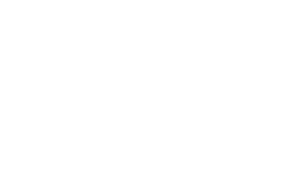
Designer : Capara
Season : AW 2012-13
© Photo : Mike Steegmans
|
|
|
|
|
|
The fashion museums: the Modemuseum in Hasselt, established in 1988; the department of lace and costume at the Royal Museums of Art and History in Brussels, active since 1977 and the oldest such institution in the country; and most important of all, MoMu in Antwerp, which since 2002 has supported a program of perceptive exhibitions, always accompanied by magnificent publications that illustrate and comment on the amazing work of Belgian designers. The magazines—some no longer in publication—with a special mention for the series Fashion: It’s Belgian; the legendary and beautifully produced magazine BAM! (Belgische Avant-garde Mode) , which owed so much to Walter Van Beirendonck; the elegant A Magazine; and last but not least the archives carefully guarded by the designers and their teams.
Having traveled along this rather particular timeline —one that moves with Belgian fashion as it advances in step with the country itself—we are now in a position to understand and attempt to tell the story of this fashion that has grown up on our doorstep. The rallying cry of the exhibition is: avoid the classic and the
conventional. Avoid chronological layouts or slavish adherence to a historical or personal viewpoint. I can’t help thinking that Belgian fashion resembles its homeland! Since it did not exist, it was invented, created out of many pieces when certain determined individuals needed it. An eccentric kingdom put together like a jigsaw puzzle in 1830 and recognized as the Belgian nation, our country has fashion that
suits it. Fashion that is created here—with a few exceptions that prove the rule—by diverse personalities: loyal, punk, timid, romantic, or even all four at once.
Personalities who love the traditions of the Gilles de Binche as much as those of the North Sea. It may sound naive, but it seems that we are marked by this unique approach to the world, this typically Belgian talent, from childhood. Our vision is like no other.
|

|

|

|
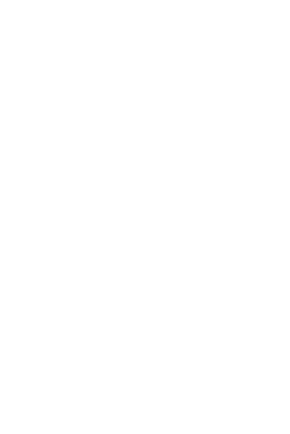
Designer: Véronique Leroy
Season: Backstage at the A/W 2009-10 show. Paris.
© Photo: Cici Olsson
|
|
The exhibition and its accompanying book, The Belgians.
An Unexpected Fashion Story, guide the visitor along a thematically ordered path from room to room—and from page to page, even though the book’s chapters are arranged slightly differently— exploring the complex creations of the men and women who made Belgian fashion what it is today.
The first section, “Heritage,” is a homage to Surrealist Belgium, from Elvis Pompilio’s musselhat to a bag bearing the legend “Ceci n’est pas un …” by the leather company Delvaux and Ann Demeulemeester’s Golden Spool award from 1982. This display is a wry and amusing expression of Belgitude. A fascinating section is dedicated to “Maison Norine,” arguably the first in a dynasty of Belgian fashion designers—at least since the nineteen-twenties. This house was privileged to have the services of René Magritte as one of its collaborators.
The largest room, “New Styles,” is where it all comes together—next to designs by Norine— the ideal moment for bringing together all those designers whose emerging work or inevitable sense of the avant-garde has played a role in the very real existence of Belgian style today. Side by side are Yvette Lauwaert, Nina Meert, the Antwerp Six, Véronique Leroy, Bernhard Willhelm, Veronique Branquinho, Peter Pilotto, and many others.
|
|
|
|
|
|
The section “Laboratories” gives an overview of the fashion design schools. Fashion is now an option in art schools, which says a lot about how it is viewed today. Such is its reputation that every year this subject attracts students from all over the world. Without these schools, where students receive excellent training, there would not really be a Belgian fashion industry. A number of notable former students are featured here: Carine Lauwers studied in Liège; Tom Van Der Borght, in Sint-Niklaas; and Angelo Figus, in Antwerp. The focus of this room is also on Martin Margiela—the unclassifiable and iconoclastic leader of Belgian fashion—who deliberately cultivated anonymity behind a team of collaborators dressed in white aprons, constantly working in his textile research laboratory, where everything was the object of experimentation. A model of creative freedom in which “everything is possible” with or without means. To this day, Margiela is the only designer to have transformed a garment into a unique object. He is in a category all his own.
The section entitled “Vocabulary” looks at the question of individuality—so dear to designers— cultivated as a signature that can become a major marketing tool. This personal vocabulary often emerges early on in a designer’s career. A case in point is A.F. Vandevorst, whose repeated use of a red cross and military or clinical references allows the designers— and their public—to revisit a well-defined universe from one
season to the next. As for Raf Simons, he poses other questions, inspired by his eye as a graphic artist and a musical sensitivity steeped in the ultracontemporary. Their respective styles are immediately recognizable and convey an impression of timelessness. And, since Belgians only make clothes for fashion, the section entitled “Love Story” makes links between fashion and the performing arts, or artistic acts pure and simple. This love of art can be seen in all its manifestations, where originality can court irreverence and designers can investigate their own wardrobes. There are extraordinary collaborations, such as that of Tim Van Steenbergen with La Scala Milan, where the limits of the wearable no longer make sense. Then there’s the evidence of Walter Van Beirendonck, who created strange silhouettes for the Ballet de l’Opéra national de Paris that ignored the need for dancers to move in their costumes, emphasizing instead the message and fantasy of the choreographer.
“Limitless” demonstrates that the Belgians are everywhere! Among the winners of the most prestigious fashion competitions, in the design studios of the major groups, as artistic directors of well-known fashion houses, or in unexpected positions at companies specializing in cosmetics, photography, or media. Carine Gilson, the only Belgian designing luxury lingerie, dresses and undresses the heroine in the James Bond film Skyfall. It has been a long time since they were outsiders…. Their secret? It’s simple. These designers believe in themselves. The ultimate consecration: Raf Simons was appointed artistic director where it was least expected. Today he is skillfully reinventing the precious heritage of the master of French couture in the postwar period, Christian Dior, in the context of today’s avant-garde. Kris Van Assche has run Dior Homme for many years with similar skill and elegance.
Leaving behind the glitz of the luxury houses we move on to “Worthwhile,” a section raising questions about ecology, ethics, and transparency in production methods. Martin Margiela—we come back to him again—achieved recognition in the early years of his career by the use of “recovered” or recycled materials. With his online project honest by, Bruno Pieters aims to be completely transparent concerning
the cost and hence the real value of each item featured on the site. Eric Beauduin and others are rethinking manufacturing methods, eliminating waste, and creating new materials, offering cleverly thought-out alternatives in which each piece becomes original and unique without sacrificing style. This is the leitmotif of alternative Belgian fashion, one that is facing up to today’s problems and tomorrow’s challenges. Our journey comes to an end with “Nouvelle Vague,” which highlights the latest arrivals on the fashion scene.
|
|
|
1986 – what a year! That year, the Antwerp Six arrived in London. La Cambre Mode[s] took in its first students, and the first incarnation of the International Festival of Fashion & Photography – Hyères was getting off the ground in the south of France. That same year, Sandra Kim represented Belgium in the Eurovision Song Contest, winning with “J’aime la vie” and momentarily turning the spotlight of a newsworthy event onto our Surrealist country. In 1986, I was eighteen and I loved fashion as dearly as life itself. I dedicate this exhibition to all those women—sometimes unsung—who fought and still fight today to make this story exist. To those women, who taught me so many things, and particularly to Franc’ Pairon—without whom I would not be what I am. It was she who opened my eyes, who taught me that the devil is in the detail, who gave me a taste for the unusual, and who taught me the most valuable lesson of all: how to believe in one’s own ideas. Long live Belgian fashion!
|
|
|
An exhibition about Belgian fashion? Is there so much to say on the subject? Before fashion there was clothing. Our relationship with clothes is almost as old as the human race. Fashion is another story altogether. For a long time fashion was the preserve of dedicated institutes and museums that took a scholarly approach to the subject and showcased style and aesthetics. But as well as serving a functional purpose, fashion illustrates the evolution of society, its culture and its political situation. Since the end of the twentieth century fashion has increasingly become a subject of contemporary art.
An exhibition about Belgian fashion was long overdue. The numerous large fashion exhibitions taking place in so many cities show that fashion is in fashion. This exhibition presents an overview of the incredible distance Belgian designers have covered in the last century. The Belgians. An Unexpected
Fashion Story comes at a turning point in the history of Belgian fashion. ‘Our’ fashion has come of age.
Its family tree includes numerous symbolic changes, from the pioneers and the avant-garde to the fashion academies, the international breakthrough and the talented young designers. This retrospective exhibition takes a look at this fascinating subject. Long live Belgian fashion!
HERITAGE: A SURREAL TRIBUTE
Belgium is a country that is constantly reinventing itself. Even before the birth of the kingdom of Belgium in 1830, needle and thread crafts were important. From tapestries to lacework in the sixteenth century, from industrialization in the nineteenth century to its modernization in the twentieth century, Belgium’s indisputable knowhow has made it a leading textile manufacturer. The country is also an outstanding exemplar of non-conformist surrealism. Combine that absurd and highly imaginative movement with the craftsmanship and technical expertise of the Belgians and the result is extraordinary. Hierarchy is replaced by anarchy and subcultures come to occupy a prominent place. Thus folkloric traditions are respected and re-evaluated, from the North Sea mussels to the Gilles de Binche costumes. The 1958 World Fair was a benchmark which assured the Belgians of a future place in fashion, not only because of their aesthetic tours de force, but also because they embodied a freedom that embraced the new generation. Together with the arrival of prêt-à-porter, the need for a fashion culture and the emergence of new lifestyles, this heralded the birth of Belgian fashion. Belgium became a cultural crossroads where individual art could thrive.
MAISON NORINE: FASHIONABLY EARLY
Between 1915 and 1952 Norine couture on Avenue Louise in Brussels was run by Honorine Deschryver and Paul-Gustave van Hecke, figureheads of the avant-garde in Belgium, both in art and fashion. This eccentric couple shared not only life’s joys and sorrows, but also a passion for expressionism and surrealism. They built up a private collection of works by contemporary international artists such as Frits Van den Berghe, Raoul Dufy, Max Ernst, Man Ray – and above all - René Magritte. As well as being their friends, some of these artists even collaborated with the couture house. At a time when Paris dominated fashion, for many years Honorine Deschryver and Paul-Gustave van Hecke were the only ones to give their enlightened creations high-art status by drawing inspiration from modern art. The concept of ‘Belgian fashion’ originated on Norine’s drawing tables.
NEW STYLES: BEGINNINGS AND AVANT-GARDE
On show in this gallery are designs by Belgian fashion designers whose avant-garde ideas earned them a place in international fashion. We begin with Yvette Lauwaert from Ghent and Ann Salens from Antwerp.
While Lauwaert caused a furore with haute couture in her GY Store at the end of the sixties, Saelens’ crocheted, fringed garments and provocative fashion shows attracted attention. The most recent silhouette is by designer Cédric Charlier who launched his own label in 2012. A whole evolution – indeed revolution – lies between Lauwaert and Charlier. In the 1980s the fashion focus was on Italy and France.
Belgian fashion was not yet synonymous with creativity, though we did excel at craftsmanship. Illustrious pioneers who made their voices heard included Nina Meert and Maggy Baum. 1981 saw the launch of the Textile Plan, which was designed to breathe new life into the declining textile sector. The Belgian Textile and Clothing Institute (ITCB) and the unquestioning commitment of its chairman Helena Ravijst led to the slogan ‘Mode, dit is Belgisch’/ ‘Mode, c’est Belge’. The Gouden Spoel competition was launched to give creative talent like Ann Demeulemeester, Marina Yee, Dirk Bikkembergs, Dirk Van Saene, Walter Van Beirendonck and Dries Van Noten the chance to collaborate with the industry and design their own collection. Having had their first taste of success as the ‘Antwerp Six’ at the British Designer Show in London in the mid-1980s, each headed for Paris, separately. Martin
Margiela was already there causing a furore with his innovative fashion shows. In the 1990s they sent shock waves through the fashion world with their cutting-edge designs and paved the way for new names like Veronique Leroy, Annemie Verbeke, Jurgi Persoons, Veronique Branquinho, Raf Simons and Haider
Ackermann. Designers like Tim Van Steenbergen, Christian Wijnants and Peter Pilotto, who made their début later on, also shared in the success of the Belgian school. In barely three decades Belgian fashion had acquired an identity of its own, not least because of the diversity of the many designers.
PORTRAITS: FROM ME TO YOU
Belgian fashion designers live and breathe their designs. Think, for example, of Diane Von Furstenberg’s ultra-feminine wrap dress, Walter Van Beirendonck’s provocative creations, the almost tangible sensibility of Olivier Theyskens’ dresses, and Elvis Pompilio’s eccentric hats. Some designers have a physical – you might even say ‘narcissistic’- relationship with their work, but then in the best sense of the word. You can almost read their collections like a biography. Their personality is reflected in the colours, the prints, the cut and the way they interpret fashion. They express their outlook on life in their designs and stamp their collections with a recognizable individuality. Their interpretation is unconstrained by convention, rarely classical. For years Ann Demeulemeester, who recently put a new team at the helm of her own brand, expressed her personality in her collections. Her identity was inextricably bound up with her name and label.
LABORATORIES: WHEN ARTISTRY MEETS INDUSTRY
You have to look hard to find a Belgian designer who has not trained at one of our fashion schools. The most celebrated institutions are the fashion department of the Royal Academy of Fine Arts – AP Antwerpen, the Ecole Nationale Supérieure des Arts Visuels - La Cambre, the Royal Academy of Fine Arts (KASK) in Ghent, the Stedelijke academie voor Schone Kunsten (SASK) in Sint Niklaas and IFAPME Château Massart in Liège. Alumni still refer to their training with great pride. Some, like Walter van Beirendonck and Marina Yee, are still attached to one of the academies.
Young people even from far-flung corners of the world flock to Belgium for the opportunity to follow in the footsteps of the Belgian designers. There is far more to a course than ‘fashion training’ because each student is also introduced to other applied arts. Teachers at Belgian schools believe a crossover with artistic disciplines is essential for a young fashion designer’s personal development. Budding designers
learn about the past so as to change the present. This, along with the personal approach of the teachers, contributes to the avant-garde style of Belgian designers. Students are encouraged to develop a signature and vocabulary of their own.
|
|
|
VOCABULARY: SINGULARITY AS TRADEMARK
Season after season the Belgian designers can be relied upon to provide a sensory experience. In every collection they create a world of their own and a recognizable universe. Starting with his very first collection each designer develops a characteristic code which experts immediately understand and read.
Apart from the clothes and accessories, the designers are also closely involved in every aspect of communication: from the interior of their store to the invitations and set for their fashion shows. The five show-boxes in this gallery plunge visitors into the world of several fashion designers, all of whom have developed their own lexicon. So we have Raf Simons’ ode to subculture, AF Vandevorst’s Red Cross and hospital bed, Edouard Vermeulen’s luxury and royal credentials, Jean-Paul Lespagnard’s nod to the popular and folklore culture and Dries Van Noten’s dreamy and sophisticated fashion shows.
LOVE STORY: FASHION IS ART
To Belgian fashion designers art is sacrosanct. As we have seen, they are given a taste of other art disciplines during their course, so it is only natural that afterwards they like to make excursions into other fields. In an eclectic manner the Belgian designers strive for a Gesamtkunstwerk and this is externalized in different ways. They explore our cultural heritage, provide costumes for theatre and dance performances at home and abroad and collaborate with contemporary artists. Ann Demeulemeester gave
the statue of Our Lady of Succour and Victory in St Andrew’s Church in Antwerp a makeover, Raf Simons worked in tandem with the American artist Sterling Ruby, while choreographer Anne Teresa De Keersmaeker has turned to Dries Van Noten for costumes for her dancers on more than one occasion. A fruitful dialogue has always existed, even if it is the actual designs that do most of the talking.
LIMITLESS: TO THE STARS
The Belgians have come a long way. Achieving international success was no sinecure. Gradually they shook off the label of underdog and now it would be impossible to imagine the international fashion world without them. Their latest fashion shows were once again must-see events. In recent years distinguished couture houses and multinationals have discovered the Belgian designers too. And their own brands have become international fashion houses like that of Dries Van Noten. Many a luxury fashion house has a Belgian creative director at its helm, like Raf Simons at Dior and Kris Van Assche at Dior Homme. The word ‘Belgian’ is now a much-used prefix and far more than a geographic demarcation. Their secret? An admirable determination and focus on their craft, while always keeping their finger on the pulse of the ever-changing zeitgeist. And all without giving themselves airs and graces.
WORTHWHILE: THE END OF THE WASTE
Words like ‘ecology’ and ‘sustainability’ are bandied around, but often with no specific application. For decades fashion lived off a flourishing economy and voracious mass consumption. Designers have since been forced to rethink their metier. At the end of the 1980s Martin Margiela was the first in Europe to make recycling a fashion phenomenon. By upgrading waste to raw material for his designs, he
augmented it into an object of higher status than the original. Belgian designers are conscientious and self-confident enough to reflect on the future of fashion, without setting themselves up as starry-eyed idealists. They refuse to compromise on creativity, but seize opportunities to combine it with sustainability. Jan-Jan Van Essche, Katrien Van Hecke, Eric Beauduin and Bruno Pieters (honest by) make use of innovative techniques, sustainable fabrics and novel designs and are transparent vis-à-vis the consumer. This gallery voices today’s dilemmas and tomorrow’s challenges.
NOUVELLE VAGUE: NEXT GENERATION
We end with the new generation of Belgian designers. They ‘resemble’ their predecessors, but regard themselves as anything but ‘followers’. In these times when trend watchers claim that fashion is dead, designers have no alternative but to regenerate fashion. What do they have to lose? They self-confidently set about looking for a voice of their own. They form collectives or go solo, often with a Belgian diploma under their belt. With the help of fashion professionals, MAD Brussels – the Centre for Fashion and Design – selected twelve young Belgian designers and gave them carte blanche to present their creations. They are figureheads of an international generation and the new face of Belgian fashion.
|
|
|
BELLISSIMA: THE STORY OF FIVE DRESSES
05.06 – 06.09.2015
Bellissima is a 1951 film directed by Luchino Visconti in which Anna Magnani starred in one of her most intense roles: she played the part of a mother who would stop at nothing to get her daughter to act in a movie made in Cinecittà. But “bellissima” is also a word that indicates female beauty around the world. It is the Italian way of life: a spectacular kaleidoscope of soft, relaxed, disorganized atmospheres, of sensuality and dolce far niente.
1945-1968 is the period that stretches from the reconstruction of a country buried under the ruins of war, and the radical undermining of the value system that had been built up in those years. It was the moment when fashion was articulated between individual traits and group qualities, offering itself as a platform on which cinema, art,
literature and design were intertwined in a remarkable network of collaboration that would denote the outlines of the creative workshop that Italy continues to be today.
Bellissima: The Story of Five Dresses is the capsule of an exhibition organized in Rome last winter*, especially designed for BOZAR: a sort of wunderkammer which, through the selection of five important garments, highlights those elements that indentify Italian high fashion. From the creations for the actresses of Hollywood of
the Tiber, to the experimental garments designed by fashion creators together with Italian artists, to the daywear which testifies the relationship between Italian fashion houses and the textile industry, to those gowns worn by International style icons. Together with these garments, costume jewelry, sketches, sample books, artworks, movies, newsreels and fashion magazines form the period reactivate than extraordinary kaleidoscope of elements, which still today defines Italian fashion’s identity.
COPPOLA E TOPPO
The professional adventure of Lyda and Bruno Coppola of Coppola e Toppo in Milan began in 1948. Coppola e Toppo believed that jewelry had to be joyful, elegant, but never loud, and glittery, that the models and the carefully matched colors had to be surprisingly imaginative, in some cases by using the sophisticated treatment of glass beads. Hence, Coppola e Toppo’s creations embodied the idea of that artistic and cultured craftsmanship, which was one of the reasons for Italian fashion’s international success. Among Coppola e Toppo’s regular buyers there are fashion houses such as Emilio Pucci, Germana Marucelli, Biki, Pino Lancetti, Fernanda Gattinoni, Valentino. The most affectionate clients of the brand included Audrey Hepburn and Jackie Kennedy
FENDI
This double-breasted coat tells the story of Fendi’s new interpretation of furs during the Sixties. This Italian fashion house makes some experimental innovations which lead to unprecedented designs. The chevron-patterned upper part in three colors is in opposition with the lower flounce made by horizontal white stripes, which can be removed thanks to a zip. From luxurious maxicoat to daytime minicoat. A new idea of the fur coat: dynamic, lively, convertible. In one word, young.
FERNANDA GATTINONI
This evening ensemble by Fernanda Gattinoni brings us back to the era of Hollywood on the Tiber, when Italian high fashion and the movie industry were so intensely intertwined. Gattinoni is one of those Italian fashion houses deeply connected to those actresses who in those years were working in Rome. It wasn’t simply a question of costume design: both Italian and international movie stars became affectionate
clients of the Romans ateliers; and Gattinoni was in charge of the wardrobes of such icons as Ingrid Bergman and Anna Magnani.
GERMANA MARUCELLI
Already starting at the end of the Forties, Germana Marucelli transforms her atelier in a creative workshop where one could find artists, writers, poets. Marucelli’s designs need these inspirations, and even the internationally renowned architecture magazine Domus records this research: this cocktail dress is made of silk twill with optical motifs conceived with the collaboration of Italian artist Getulio Alviani, which emphasize the delicate movement of the pleated skirt. The Optical collection for Spring/Summer 1965 was shown in Marucelli’s Milanese atelier, designed by Paolo Scheggi with the collaboration of Getulio Alviani: a mobile and mutable setting that has curved and undulating surfaces, dominated by unalloyed chromatic elements. Ada Ardessi’s photographs are the visual legacy of the dialogue between this extraordinary scenery and Marucelli’s sophisticated designs.
MILA SCHÖN
During the Sixties, Mila Schön became internationally renowned thanks to her rigorous daywear: an Italian way of designing high fashion, which was moving towards high quality ready-to-wear. Creating the garment was first of all a question of textile design. Schön’s double wool fabrics – created together with Agnona – combine extreme lightness and color patterns both graphic and pop. These daytime ensembles
evoke a sophisticated luxury, mixing refined constructive details and rich fabrics, suggesting an idea of high fashion designed to be worn every day.
VALENTINO
In 1966, this evening pajamas by Valentino becomes internationally famous thanks to Henry Clarke’s photographs for Vogue. It’s the new uniform for Italian socialites, which thus enter the International Best- Dressed List. This pajamas in silk crepe by Forneris uses the chromatic rhythm that alternates black and white to redesign the female silhouette: it’s high fashion at its best, easy to wear and simultaneously
glamorous, which tells a story of relaxed atmospheres and modern noblewomen lying languidly on mountains of pillows in Roman palaces.
Price: Free access
Curators: Maria Luisa Frisa, Anna Mattirolo, Stefano Tonchi
Production : BOZAR EXPO / Project by MAXXI ( National Museum of XXI Century Arts)
See also the Agenda>
PALEIS VOOR SCHONE KUNSTEN, BRUSSEL
Rue Ravenstein 23
1000 Ville de Bruxelles
+32 (0)2-507 82 00
bozar.be
|
|
|
|
|
|
|


